Q
How to open Volvo XC90 petrol cap?
To open the fuel tank cap of the Volvo XC90, first make sure the vehicle is unlocked. Then, walk to the left rear where the fuel tank is located. Simply press the outer edge of the fuel tank cap, and it will pop open automatically. Next, turn the inner cap counter - clockwise to start refueling. It should be noted that some XC90 models may come with a design without an inner cap. In this case, you can directly refuel by just pressing the outer cap. This depends on the year and configuration of the vehicle.
In Malaysia's hot and rainy climate, it is recommended to regularly check the sealing of the fuel tank cap to prevent dust or rainwater from entering the fuel tank and affecting the fuel quality. Additionally, Volvo's fuel tank caps are usually designed with an anti - drip function. When refueling, you don't need to completely remove the inner cap. You can just hang it on the fuel tank opening to avoid soiling the car body.
If you encounter a situation where the fuel tank cap won't open, don't try to pry it open forcefully. You can refer to the owner's manual or contact the Volvo authorized service center. There are official after - sales outlets in major Malaysian cities such as Kuala Lumpur, Penang, and Johor Bahru to provide professional support. During regular maintenance, you can also ask the technician to check the spring mechanism and sealing ring of the fuel tank cap to ensure its normal operation.
Special Disclaimer: This content is published by users and does not represent the views or position of PCauto.
Related Q&A
Q
How expensive is it to maintain a Volvo XC90?
In Malaysia, the maintenance costs for the Volvo XC90 sit in the upper-middle range for luxury SUVs. Regular services like oil changes and filter replacements typically run between RM800 to RM1,200 per visit, depending on the type of oil used and the specific pricing at each authorized service center. Major services, which might include brake pad replacements and transmission fluid changes, can set you back anywhere from RM3,000 to RM5,000. It’s definitely advisable for owners to stick to the official maintenance schedule to keep the vehicle performing at its best and to avoid even heftier repair bills down the line.
As a luxury SUV that prioritizes safety and technology, the XC90 does come with relatively higher maintenance costs. However, Volvo’s reputation for durability and high-quality components means lower long-term failure rates, which helps offset those unexpected repair expenses. Malaysia’s authorized Volvo service centers offer transparent maintenance packages, so owners can get a clear idea of costs upfront and plan their budgets accordingly. It’s also worth considering an extended factory warranty plan to cover potential high-cost repairs later in the vehicle’s life.
When stacked against other luxury brands, Volvo’s maintenance fees are reasonably competitive. And let’s not forget—its top-tier safety tech and eco-friendly interior materials are big reasons many owners are happy to invest that little bit extra.
Q
What is the life expectancy of a XC90?
The Volvo XC90, as a luxury SUV, typically enjoys a service life of 15 to 20 years in the Malaysian market, though this can vary depending on maintenance upkeep, driving habits, and local climate conditions. Sticking to regular oil changes, transmission fluid replacements, timing belt services, and strictly following the manufacturer's recommended maintenance schedule can significantly extend its lifespan. Malaysia's hot and humid environment can accelerate the aging of rubber components and electronic parts, so it's advisable to regularly inspect chassis bushings, weatherstripping, and wiring harnesses. The Drive-E engine under the hood has a solid reputation for reliability, but using the correct grade of fully synthetic oil is a must to ensure it performs at its best. For those looking at a used XC90, pay close attention to the air suspension (if equipped) and the turbocharging system – these are common high-maintenance areas on premium models. It's worth noting that Volvo's safety tech, like the City Safety system, tends to hold up well even in high-mileage vehicles, which is a core strength of the brand. With proper care, the XC90 is more than capable of serving Malaysian families for the long haul. Its durability is on par with German rivals in the same class, but it often comes with a more attractive maintenance cost advantage.
Q
Which Volvo XC90 to avoid?
Honestly, every version of the Volvo XC90 brings its own unique strengths and character—there’s really no model you should outright avoid. But if you’ve got specific needs or priorities, there are a few things worth keeping in mind. Let’s break it down. If you’re working with a tight budget but still want solid features, the 2020-2022 models might be tricky since some of those are no longer in production. That could mean higher costs or more hassle down the line when it comes to maintenance and finding replacement parts.
Now, if value for money is your main goal, the 2025 Volvo XC90 Ultra T8, priced at RM 434,888, sits on the higher end. If you don’t really need much all-electric range, you won’t get to fully leverage its plug-in hybrid benefits, making it a bit of a stretch cost-wise. And let’s say you’re not overly fussed about the latest power upgrades or tech tweaks—then the incremental improvements in newer models might not feel worth the extra cash. In that case, going for an older model could save you a pretty penny upfront.
Q
Is the XC90 a large SUV?
Yeah, the Volvo XC90 is definitely a full-size SUV. It stretches close to 5 meters in length and has a wheelbase over 2.9 meters, offering a three-row, seven-seat layout. The space is roomy and comfortable, making it a solid choice for Malaysian families or anyone needing to haul multiple passengers. Over here in Malaysia, the XC90 has built up a good following thanks to its Scandinavian luxury design, cutting-edge safety tech, and strong performance. The T8 plug-in hybrid, in particular, strikes a nice balance between power and eco-friendliness, which aligns perfectly with what local folks expect from a premium SUV. Now, full-size SUVs generally give you better ground clearance and cargo capacity, but that larger footprint can feel a bit cumbersome when navigating the tighter streets of cities like Kuala Lumpur. So, it's smart to really think about your daily driving needs before taking the plunge. Rivals in this segment include German heavyweights like the BMW X7 and Mercedes-Benz GLS – definitely worth checking out how they stack up in terms of space, features, and overall driving feel before making a decision. Given Malaysia's hot and rainy climate, the XC90's panoramic sunroof and four-zone climate control are nice touches that boost comfort. And of course, Volvo's City Safety system adds an extra layer of security when dealing with tricky traffic situations.
Q
What is the best year of XC90 to buy?
When shopping for a Volvo XC90 in Malaysia, the second - generation models from 2016 onwards are a preferable choice – especially the post - 2018 facelift versions. These are equipped with the more refined Drive - E turbo engines (T5/T6/T8), an upgraded Sensus infotainment system, and optimized suspension settings that better suit local road conditions. If your budget stretches further, the 2020+ models are equipped with standard Pilot Assist semi - autonomous driving and the CleanZone air purification system, both of which are particularly useful in our tropical climate. A quick heads - up: early 2016 - 2017 batches had occasional electronic system lag issues, so we would strongly recommend going through the Volvo Selekt certified pre - owned program to enjoy the peace of mind of factory warranty. What really sets the XC90 apart in its class is the standard 7 - seat layout and that typically Volvo ultra - high safety configuration – including the rollover protection system. That said, it’s worth cross - shopping against the Lexus RX or BMW X5 from the same model years. European cars tend to have slightly higher maintenance costs here compared to Japanese rivals, though Volvo’s factory 5 - year free servicing plan helps mitigate that difference.
Q
What is the price of Volvo XC90 in India?
The Volvo XC90 is priced roughly between 8 million to 12 million Indian Rupees in India (that's around 440,000 to 660,000 Malaysian Ringgit, though exchange rates can fluctuate). The exact figure hinges on the specific trim level, regional taxes, and any dealer promotions on offer. As a luxury SUV, the XC90 has earned global acclaim for its Scandinavian design ethos, cutting-edge safety tech, and plug-in hybrid options, and in India, it's similarly targeting the premium buyer demographic.
For our Malaysian readers, while local pricing will differ from India's, you can get a sense of its positioning. The XC90 is primarily sold in Malaysia via imported channels, which means its price tag tends to be on the higher side due to tariffs and import duties. Key highlights of the vehicle include those distinctive Thor's Hammer LED headlights, the intuitive Sensus infotainment system, and the comprehensive City Safety suite. Power-wise, there's a range to choose from, including T5, T6, and the T8 plug-in hybrid – the latter striking a nice balance between performance and eco-friendliness.
If you're considering getting behind the wheel of one, we'd recommend checking quotes from authorized Volvo dealers in Malaysia. Also, keep an eye out for the warranty packages or financing deals that Volvo Asia Pacific frequently rolls out – they can sweeten the deal.
Q
Is it worth buying a Volvo XC90?
Whether a Volvo XC90 is worth buying in Malaysia really comes down to your needs and budget. This SUV is known for its top-notch safety, plush interior, and that distinct Scandinavian design flair – it’s a solid pick if you’re a family-focused driver who doesn’t want to compromise on quality.
The XC90 comes loaded with tech right out of the box, like the City Safety system and Pilot Assist semi-autonomous driving features. Power-wise, you’ve got options: T5, T6, and the T8 plug-in hybrid. The T8, in particular, stands out for fuel efficiency, which is a big plus given Malaysia’s not-so-friendly fuel prices.
Inside, space is generous, and the three-row seating setup is practical – though let’s be real, that third row is better suited for kids or short hops rather than full-grown adults on long drives.
Now, the flip side: Volvo’s after-sales network in Malaysia isn’t as extensive as the German or Japanese brands. Maintenance and repair costs can run higher, and when it comes time to sell, it won’t hold its value as well as a Lexus RX or BMW X5.
If you’re drawn to unique design, prioritize cutting-edge safety, and can swing the higher ownership costs, the XC90 is a luxury SUV that deserves a spot on your shortlist. But don’t stop there – the Audi Q7 and Mercedes GLE are strong contenders too, each with their own strengths. At the end of the day, take ’em for a test drive and go with what best fits your real-world needs.
Q
How to check the oil level on a 2018 Volvo XC90?
To check the engine oil level of the 2018 Volvo XC90, first make sure the vehicle is parked on a level surface and turn off the engine for at least 10 minutes to allow the oil to drain back into the oil pan. Then open the hood and find the oil dipstick, usually a yellow or orange pull - ring. Pull it out, wipe it clean with a clean cloth, re - insert it, and then pull it out again. Check if the oil mark is between the "MIN" and "MAX" markings on the dipstick. If it's below the "MIN" mark, you need to add 0W - 20 engine oil that meets Volvo's certification.
Given the hot and humid climate in Malaysia, it's recommended to regularly check the condition of the engine oil, as high temperatures can accelerate oil oxidation. Also, be aware of the electronic oil gauge system equipped in the Volvo XC90. You can view the digital oil level display through the vehicle information menu on the central control screen, which is more accurate than the traditional oil dipstick.
During daily maintenance, besides paying attention to the oil level, also note the color of the oil. If you find it has turned black or contains metal debris, replace it immediately. It's advisable to follow the manufacturer's maintenance cycle of every 10,000 kilometers or 12 months. Using the synthetic oil recommended by the factory can better protect the turbocharged engine and maintain good lubrication performance even in Malaysia's mountainous terrain.
Q
How to check tire pressure on 2018 Volvo XC90?
To check the tire pressure of the 2018 Volvo XC90, first make sure the tires are cold (the vehicle has been parked for at least 3 hours or driven for no more than 2 kilometers). Then, use a digital tire pressure gauge or the tire pressure detection equipment at a gas station/repair shop. Unscrew the tire valve cap, align the tire pressure gauge with the valve stem and press it firmly, and read the displayed tire pressure value. Compare it with the vehicle's recommended value (usually indicated on the driver's side door frame label, inside the fuel tank cap, or in the user manual. The standard tire pressure for the XC90 is approximately 230 - 250 kPa). If the tire pressure is insufficient, use an air pump to inflate the tires to the recommended value. If it's too high, press the center of the valve stem to release air. In the hot climate of Malaysia, the tire pressure may rise slightly due to high temperatures, but there's no need to deliberately release air because the vehicle's recommended value already takes temperature changes into account. Checking the tire pressure once a month regularly can ensure driving safety and fuel efficiency. At the same time, it's recommended to check the spare tire pressure (if equipped), and note that abnormal tire pressure may cause uneven tire wear or a decline in handling performance. If the tire pressure warning light appears on the dashboard, it needs to be dealt with immediately.
Q
What is the fuel economy of a 2018 Volvo XC90?
The 2018 Volvo XC90 comes in versions such as the T5 and the T8 Twin Engine Inscription. The official combined fuel consumption of the T5 version is 7.9L per 100km, while that of the T8 Twin Engine Inscription version is 2.1L per 100km. However, the actual fuel economy can be affected by multiple factors.
In terms of driving habits, aggressive driving styles like rapid acceleration and sudden braking can increase fuel consumption. On the contrary, good habits such as smooth starts and constant - speed driving can help reduce fuel consumption. Regarding road conditions, in congested urban areas where vehicles frequently start and stop, fuel consumption will go up. On the other hand, on highways where vehicles can maintain a stable high - speed, fuel consumption is usually lower.
If the vehicle is overloaded, for example, when it is often full of passengers or carrying a large amount of cargo, the engine has to output more power, which also leads to an increase in fuel consumption. In addition, good vehicle maintenance, such as regular servicing and maintaining proper tire pressure, is beneficial for keeping fuel consumption low.
Latest Q&A
Q
How reliable is Mazda CX-5 engine?
Mazda's CX-5 has built a solid reputation in Malaysia thanks to its Skyactiv-G engine lineup, widely praised for its highly reliable performance and impressive fuel economy. These naturally aspirated powerplants combine direct injection technology with a high compression ratio, striking a nice balance between dynamic performance and eco-friendly efficiency. Local owners consistently report minimal issues even after years of use, and the post-2017 models saw noticeable upgrades in cooling system efficiency and transmission tuning, which improved significantly. Mazda's Skyactiv technology deserves special mention here—it's not just about the engine. The whole lightweight design philosophy and precision-engineered components really enhance durability across the board. That said, sticking to the official maintenance schedule is key, especially swapping in full synthetic oil every 10,000 km. If you live in Malaysia's tropical climate, keep a close eye on your coolant levels and make sure to get those throttle bodies cleaned regularly to avoid any performance issues. Stacked against its peers, the CX-5's engine is noticeably smoother than most turbocharged rivals. It might not have the immediate acceleration you get from some German models when you floor it, but the trade-off comes in much lower repair bills, which is very appealing to family buyers who prioritize hassle-free long-term ownership. To sweeten the deal, Mazda Malaysia backs it with a 5-year factory warranty, which definitely takes some of the stress out of car ownership. If you're in the market, it is strongly recommended to check out certified pre-owned examples or purchase new cars from official dealerships—you can have peace of mind knowing that full aftersales support is there if you need it.
Q
Which engine is the Mazda CX-5 equipped with, V-four or V-six cylinder engine?
In Malaysia, the Mazda CX-5 comes packing Skyactiv-G inline-four engines – nope, not V4 or V6. Right now, petrol options are the 2.0L and 2.5L, both naturally aspirated, though some overseas markets do get the Skyactiv-D diesel too. Mazda's Skyactiv tech is all about balancing fuel efficiency with power, using high compression ratios and lightweight designs to boost performance. Local owners tend to rave about how smooth and reliable these four-cylinders are.
It's worth remembering that V-shaped engines like V6s are usually reserved for higher-performance or luxury models – they're more complex and costly to build. As a family SUV, the CX-5's four-cylinder setup makes total sense, striking a better balance between daily-driving economy and easy maintenance.
For Malaysian buyers, it really boils down to your needs. If you want smooth driving and good fuel economy, the CX-5's current four-cylinder powertrains should do the trick, and Mazda's Skyactiv tech has earned its stripes. As for whether the brand will bring in other engine options down the line? We'll have to wait for official word on that.
Q
How to open the fuel filler cap of Jeep Wrangler?
To open the fuel cap on a Jeep Wrangler, first make sure the vehicle is completely turned off. Then, locate the fuel door on the rear right side of the vehicle. Press the release button on the outside of the fuel door—on some models, you might need to unlock the doors first—and then gently pull it open. It's worth noting that certain model years of the Wrangler feature a twist-off cap design; for those, simply turn the cap counterclockwise to open it.
Given Malaysia's hot and rainy climate, it's a good idea to regularly check the fuel cap's seal to prevent fuel evaporation or water intrusion caused by rubber deterioration. As a rugged off-roader, the Wrangler's fuel system is generally more dust and water-resistant than your average SUV. If you ever struggle to open the fuel door, it could be due to mud and debris buildup after off-roading—try rinsing it with clean water and then attempt again. We recommend keeping a spare fuel cap key handy in case the electronic release system acts up. For long-term storage, consider using a fuel cap dust cover for extra protection.
Q
How fast can a Jeep Wrangler run?
The top speed of a Jeep Wrangler varies depending on the specific model and engine setup. Take the 2.0-liter turbocharged version you'll commonly find in Malaysia, for example – it's electronically limited to around 180 km/h. Step up to the 3.6-liter V6, and you're looking at a top end closer to 190 km/h. But let's be real, actual speeds can dip based on road conditions, how much you're hauling, and even your tires.
Here's the thing: the Wrangler is built for off-roading glory, not tearing up the tarmac. Its bread and butter is low-end torque and crawling over gnarly terrain, not chasing lap times. That body-on-frame construction and sky-high ground clearance? They're total rock stars on the trail, but on the highway, they create more wind resistance than a barn door. That's part of why it's not breaking land speed records.
And hey, let's not forget – Malaysia's highway speed limit tops out at 110 km/h. Always better to play it safe and stick to the rules. If you're really into what makes a Wrangler tick as an off-roader, keep your eye on the good stuff: 37 degrees of approach angle, 31 degrees of departure angle, and a 760-millimeter water-fording depth. That's where this Jeep truly shines.
Q
What type of vehicle is a Jeep Wrangler?
The Jeep Wrangler is a classic rugged off-roader, renowned for its exceptional 4x4 capability and tough-as-nails body-on-frame construction. It’s a perfect fit for Malaysia’s diverse landscapes, handling both city commutes and outdoor adventures with equal ease. Built on a solid ladder frame, it comes packing a robust four-wheel-drive system and generous ground clearance, making short work of muddy trails, sandy patches, and other tricky terrain. And let’s not forget those removable doors and roof – they’re pure fun, adding that open-air freedom we all crave.
In Malaysia, the Wrangler has a huge following among off-road enthusiasts and outdoor lovers. Its iconic design and proven reliability strike the perfect balance between practicality and head-turning personality. Plus, Jeep offers a range of powertrains, including petrol and plug-in hybrid options, so there’s something for every kind of driver. They’ve also been upping their tech game lately, with user-friendly touchscreen infotainment systems and advanced driver-assistance features that make daily drives more convenient and comfortable than ever.
View MoreRelated News
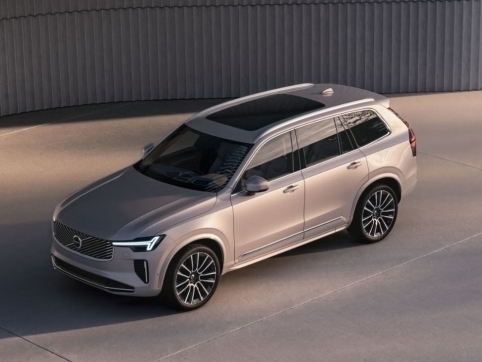
Volvo XC90 Facelift Launched in Malaysia with Exterior and Interior Changes
JohnApr 11, 2025
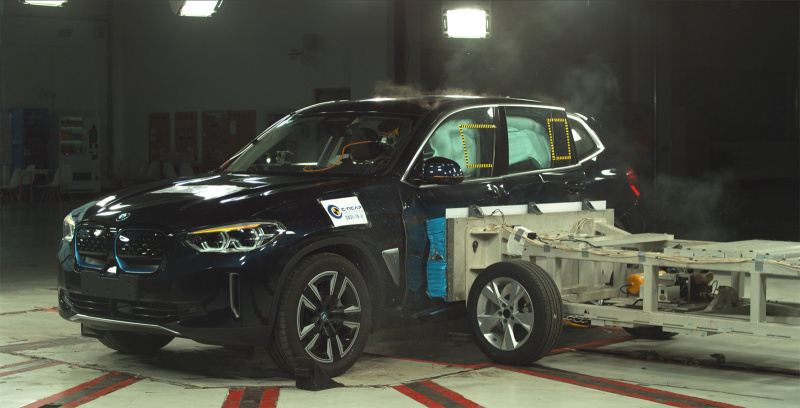
Structure, Materials, Airbags, What are the main evaluation criteria for automotive safety performance?
WilliamSep 14, 2024
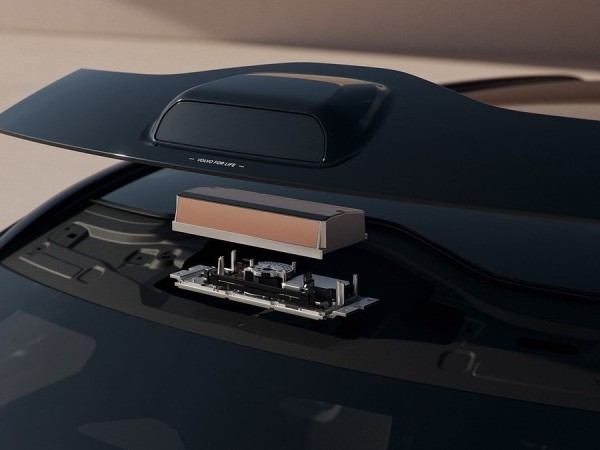
Warning: Vehicle LiDAR Can Damage Your Phone Camera!
AshleyMay 19, 2025

Well-Planned Space: The Exceptional Practicality of the Volvo XC60
Kevin WongMay 16, 2025

Volvo EX90 Electric SUV Now Available – RM 442,888
LienApr 11, 2025
View More

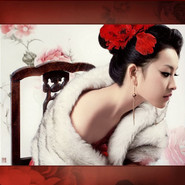










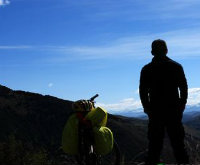


Pros
Cons